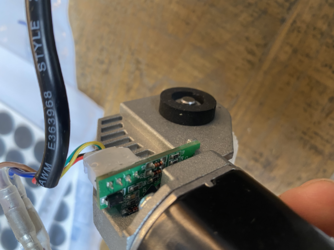P
PaulD1
Hi.
I want to control a TV Lift from a home automation system. Its hasn't got any standard way of doing this and the person setting the home automation needs to know just a few things to get it working.
Ive had an electrician look at the control box and motor, he's figured out that the control box sends power to the motor for up and reverses the polarity for down, brown/blue. There are then 4 more wires coming from the motor to the control box and he thought that they must be the limit switches that shorts to stops the motor going up or down, but he couldn't find a correct short, they were all over the place.
Ive attached a photo of the motor and wires attached... any help would be very gratefully received ... here's hoping.
I want to control a TV Lift from a home automation system. Its hasn't got any standard way of doing this and the person setting the home automation needs to know just a few things to get it working.
Ive had an electrician look at the control box and motor, he's figured out that the control box sends power to the motor for up and reverses the polarity for down, brown/blue. There are then 4 more wires coming from the motor to the control box and he thought that they must be the limit switches that shorts to stops the motor going up or down, but he couldn't find a correct short, they were all over the place.
Ive attached a photo of the motor and wires attached... any help would be very gratefully received ... here's hoping.










